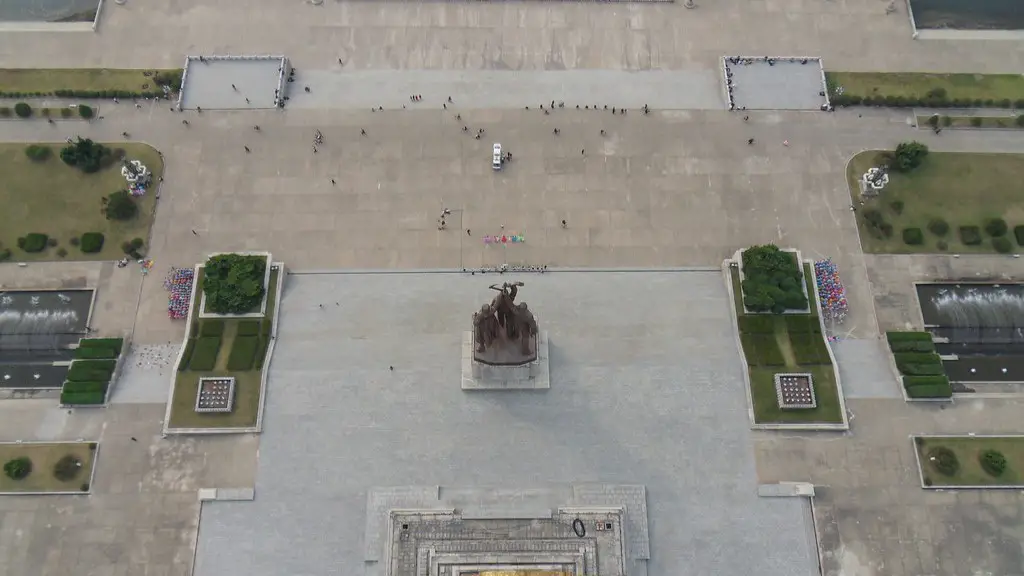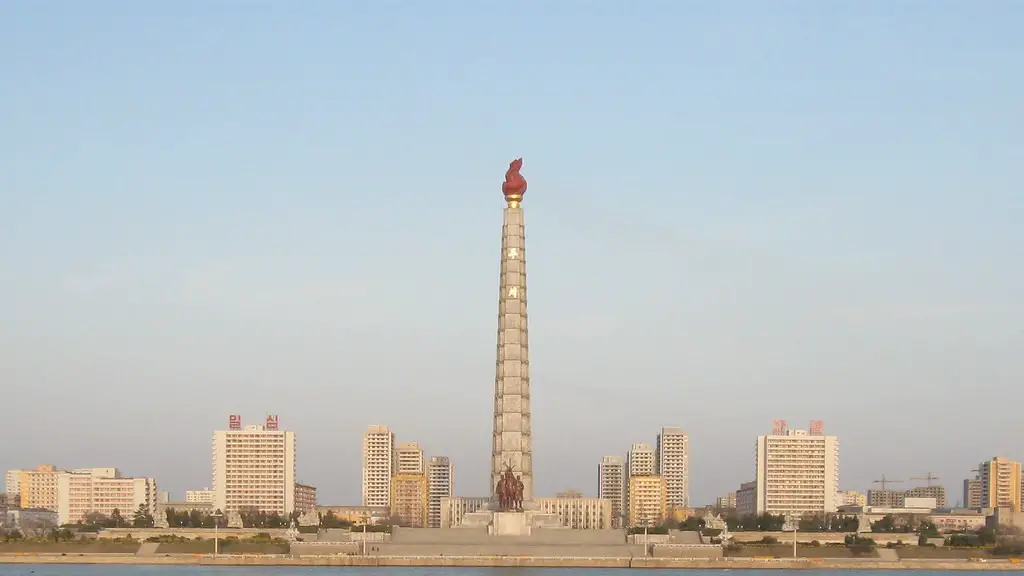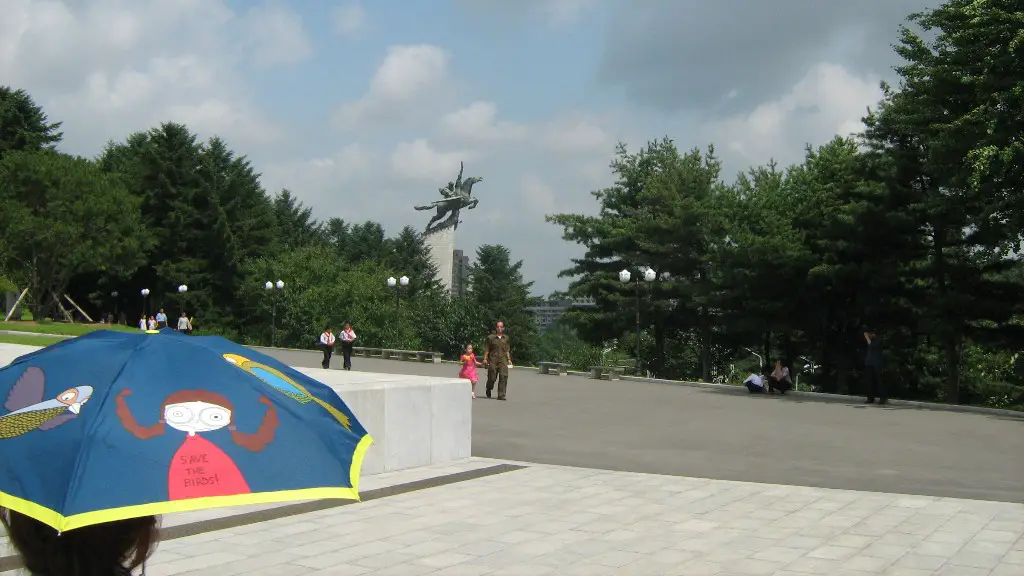Background Information on North Korea
North Korea has been a growing concern for some time now. Since the Korean War ended in 1953, the country has been in a state of political and economic isolation. This has been exacerbated by the country’s nuclear weapons program, which has caused tensions to rise between the regime and the international community. In recent months, the situation has become even more volatile, with the country launching a series of missiles that have put Guam in their range.
The United States has responded to the threat posed by North Korea by imposing economic sanctions, increasing military presence in the region and increasing pressure on China and Russia to convince the North Korean regime to denuclearize. North Korea has so far resisted these efforts, leading to growing concern that the situation could escalate to a full-scale conflict.
Relevant Data on North Korea’s Missile Tests
In 2017, North Korea conducted a record 22 missile tests, increasing the range of its weapons systems and demonstrating an ability to reach Guam. As the country continues to pursue the development of its ballistic missile program, there is a growing fear that the regime may use these weapons for offensive strikes in the future.
This fear has been further heightened by recent statements from North Korea’s leader Kim Jong Un, who has previously said that he is prepared to use force against the United States if it escalates the situation in the region. This is seen as a direct threat to Guam, which would be the most likely target for any North Korean strike.
Perspectives from Experts
Experts agree that North Korea poses a serious threat to the region. Many believe that the country’s capabilities are more advanced than previously thought, and that its missiles are now capable of reaching Guam. They also caution that this could lead to a full-scale conflict, which could have devastating consequences for the region.
However, there is also a sense among some experts that the situation is still manageable. They see the recent diplomatic efforts as a sign that North Korea is open to finding a peaceful solution, and point out that a nuclear strike on Guam is still unlikely. They argue that the current situation is more of a political struggle than a military one, and that this may be the best hope for avoiding further escalation.
Analysis of the Risks Involved
The risk of a North Korean attack on Guam is very real. The country has demonstrated a willingness to use force in the past, and its missiles now have the range to reach the island. This poses a serious threat to the United States and its allies, which could lead to an armed confrontation.
However, the risks are not limited to military action. North Korea’s nuclear capabilities could also be used as a bargaining chip to extract economic concessions from other nations. This could have a destabilizing effect on the region, and could potentially lead to further conflict.
International Response to the Threat
In response to the threat posed by North Korea, the international community has sought to initiate a diplomatic solution to the crisis. The United Nations Security Council has adopted a series of resolutions aimed at curbing the country’s nuclear ambitions, and China and Russia have called for dialogue between the two sides.
The United States has also taken a more active role in the region, increasing its military presence and increasing economic pressure on North Korea. This has been largely welcomed by other nations, although there are some concerns that the US’s approach may be too aggressive and could provoke a military conflict.
Impact on Guam
The threat posed by North Korea has had a direct impact on Guam. The island has seen an increase in military presence, with the US deploying additional troops and assets to the region. This has caused some disruption to life on the island, with residents feeling increasingly insecure.
The situation has also caused a decline in tourism to the island, as visitors are wary of the potential for conflict. This has had an economic impact, as the island is heavily reliant on the tourism industry for its economic prosperity.
Role Played by China and Russia
China and Russia have played an important role in attempting to de-escalate the situation. Both countries have called for an end to the nuclear crisis and have sought to engage in diplomatic talks with North Korea. However, there are some doubts about their commitment to the process, as they have been hesitant to impose economic sanctions.
The two countries have also been involved in attempts to strengthen regional security, such as the recently proposed “dual-track approach” by China. This calls for the denuclearization of North Korea and the strengthening of regional security, and is seen by some as a positive step towards resolving the crisis.
Economic Impacts of the Crisis
The crisis has had a significant economic impact on the region. Sanctions imposed on North Korea have had a destabilizing effect on the economy of the country, while the increased military presence in the region has caused havoc with shipping lanes and the movement of goods.
The situation has also had a significant impact on the economies of the countries in the region. For example, Japan has suffered from a decline in investment and tourism due to the crisis, while South Korea has seen an increase in defense spending as a result of the tensions.
Impact of the Crisis on the North Korean Regime
The crisis has had a significant impact on the regime in North Korea. The increased pressure from the international community has weakened its grip on power, and the country has been hit hard by the economic sanctions imposed in recent months.
However, the regime has also used the crisis to its advantage. It has sought to rally people around the flag and to consolidate public support for its nuclear ambitions. This has had the effect of allowing the regime to maintain a grip on power, despite the economic woes.
Impact of US-North Korea Relations on the Region
The crisis has had an impact on the future of US-North Korea relations. The Trump administration has been vocal in its criticism of the North Korean regime, and this has had the effect of increasing tensions in the region. This has further destabilized the situation, and could potentially lead to further military escalation.
However, US officials have also sought to engage with North Korean leaders in an attempt to find a peaceful solution. While the prospects for success remain uncertain, this could be the best hope for de-escalating the tensions in the region.
International Efforts to Resolve the Crisis
The international community has sought to facilitate a peaceful solution to the crisis. The United Nations has been involved in mediation attempts, and there have been several multilateral and bilateral meetings between the US and North Korea.
While a peaceful resolution to the crisis is still some way off, the international community has made progress in recent months. The diplomatic efforts have been welcomed by many, and could prove to be the key to ultimately resolving the crisis.
Conclusion
The threat posed by North Korea is a significant one, and has had a direct impact on the region, both economically and politically. While progress has been made in recent months towards resolving the crisis, there is still a long way to go. The situation remains precarious, and there is still no guarantee that the crisis can be resolved peacefully.





